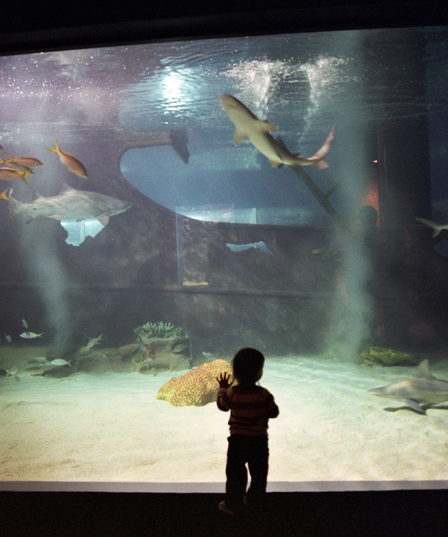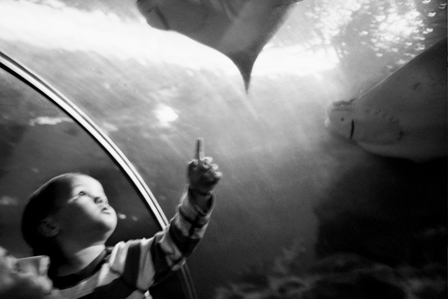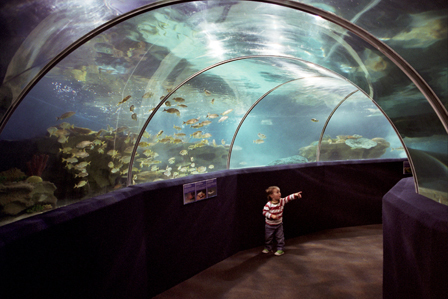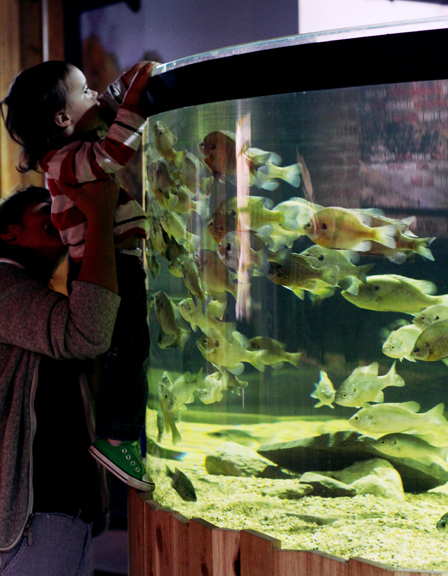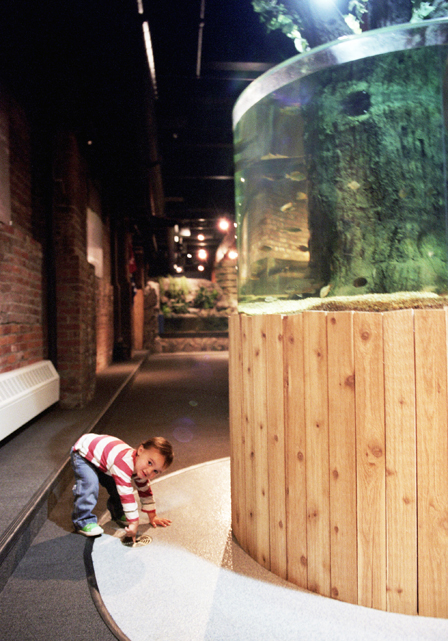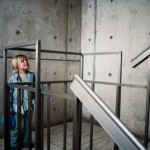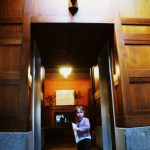No. 5 – Greater Cleveland Aquarium
When I first moved to New York in 2002, I used to chat with architect friends about the frequency with which spaces are “recycled.” Someone new to a neighborhood would point out a hip new bar, and someone who’d lived there a few years would nostalgiacally recall when it was a pet store or a bakery. The flagship Apple store in New York’s SoHo was once a traditional American post office. The idea of space being used for different purposes fascinates me — the energy that ebbs and flows between four walls can be transformed again and again with design, usage, and the cast of characters occupying the space.
One of my favorite buildings in London, U.K., is the Battersea Power Station. An old brick building with four massive smoke stacks, this iconic building has been used in Doctor Who, and is a source of keen interest for local Londoners. It should come as no surprise, then, how cool I think it is that Cleveland has converted one its old power plants into a sprawling, gorgeous aquarium. Obviously hungry for the culture, Clevelanders became members of the Aquarium in the tens of thousands in its first year, and the facility expects to draw 400,000-500,000 visitors annually. No small feat for a city with a current population of less than 400,000.
One of my very first blog posts, in 2007, recounted the inspiration I got from looking at Albert Watson’s images, especially of those he took of jellyfish in an aquarium in Las Vegas. At the time, I was traveling to Boston, and had the chance to visit the New England Aquarium while I was there. It was the first time I’d been in any place like this since I was a little kid, most certainly since I had become a professional photographer. I absolutely fell in love with the photo opportunities.
Shortly after the Greater Cleveland Aquarium opened its doors in 2012, I had the good fortunate of an invitation to bring Zak, our small subject, to explore it, for this installment of Kids in Space. While his exploration of the space was as amusing to me as always, the element of fish in motion as the setting for these images added something unusual. Fish, it turns out, are just as much moving targets as 2-year-old boys, and so, trusting in the quiet rhythms of life, and waiting patiently for shots to align (while chasing said 2-year-old) was of paramount important in this shoot.
I delight in the ways that children are attracted to things in a space you or I might not notice, and Zak did not disappoint. He found a non-descript drain pipe alongside a display tank, and amused himself by putting his finger into the holes. Children seem to have a knack for finding joy in the simplest and most mundane of things — a whole aquarium of sharks, fish, sea horses, and stingrays, and he still giggled over the drain pipe. The decorative ship-reminiscent ropes that lined ramps and walkways were more than just perfectly themed for sea-faring to Zak; to him they seemed part of a jungle gym, and he hung his hands on the rope as if he were going to swing.
The containment of the space seemed to have a comforting effect. While Zak ran around a lot, utterly free to explore, he was also genuinely and quietly interested in the various things he found. The overall vibe of the aquarium reminded me of a warm, silent library — honor and respect for the space permeated the air, as did the potential for learning, observation, and contemplation. Indeed, there is something very “Cleveland,” about it, as the overall energy conjured images of my elementary school days at the tiny Corpus Christi School, where we had the same smells, the same soothing essence.
While there are places where the old architecture draws attention to itself, such as the lobster tank hovering in a smoke stack, for the most part, it feels entirely integrated into its new life as a living museum for fish and sea creatures. It wonderfully maintained nuances of the structure, like bricks and archways, while creating something entirely different. The old mixing with the new has a grounded feeling. Like young Zak, I felt comforted there, and respected its environs as a place of safe exploration and learning.
